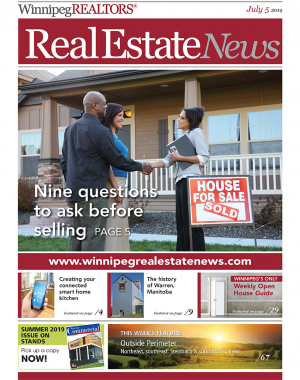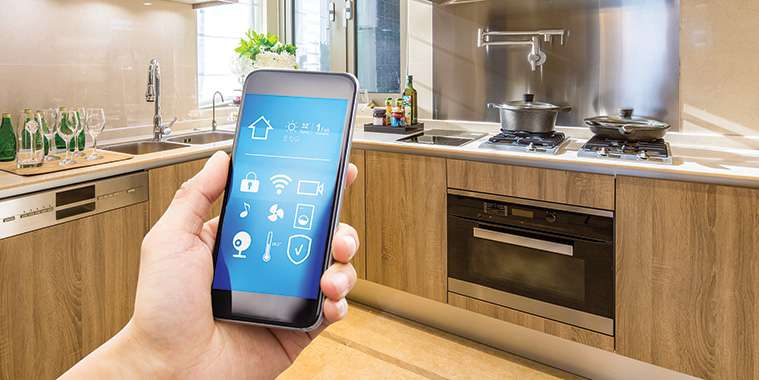by Brandon Doyle
The kitchen is often considered the central hub of the home. It is a place for entertaining and where many homeowners end up spending most of their time. In this article, I’ll go over some of the vast options available to deck out a smart kitchen.
For any smart kitchen, you should consider the purchase of an online voice assistant. Devices such as Amazon’s Echo Show and Google Nest Hub both offer screens that can help you find favorite recipes, read answers to questions, get weather updates, play music and videos, or see who’s at the door with Ring doorbell integration.
As we dive deeper into home automation, you may decide to add a hub to your home. This is a device that allows different smart products to work together. For my home, I decided to go with an Abode gateway since it offers the most integrations without a subscription and is compatible with both Z-Wave and ZigBee devices. Another popular option is Samsung SmartThings Hub.
Lighting — The kitchen is a great place to add lighting under cabinets. Philips Hue offers a dimmable multi-coloured light strip that is easy to install. Simply shape, bend, and attach it to any solid surface. The strip can be cut or extended up to 32.8 feet. When paired with a Hue Hub or other ZigBee-compatible system, it can be controlled using an app or your voice or even synced to music. Aeotec offers an alternative that works on Z-Wave networks.
Smart plugs — The Fibaro Wall Plug with Z-Wave Plus, for example, can turn any ordinary kitchen appliance into a smart one. Simply plug your “dumb” device–like a coffee maker, toaster, or blender — into the smart plug and turn it on and off right from your smartphone. Morning coffee, anyone? They’re also great for seasonal lighting. The Fibaro smart plug also gives you the ability to monitor and measure power usage by device and has a built-in USB charger for your phone or tablet.
Flood sensors — The Ecolink Z-Wave Plus Flood & Freeze Sensor detects both unwanted water and freezing pipes. This device is perfect for homeowners with a dishwasher to keep under their sink in case of a leaky pipe. What’s unique about the Ecolink Flood sensor is that it has a dual ability to detect a potential pipe freeze. Once it detects a certain temperature, you will be notified via smartphone or alarm if a freeze condition occurs, and you can use it to tell your Z-wave thermostat to turn up the heat, which can help avoid costly repairs. This is great for monitoring second homes and vacant homes where problems may go unnoticed until it is too late.
Appliances — No ultimate kitchen would be complete without the Samsung Family Hub Refrigerator. The door features a touch screen that displays the weather, pictures, lists, and your calendar of events. You can even get a snapshot of what is inside and shop for groceries when things are running low. Samsung has extended its lineup in its Chef Collection, including wall ovens, ranges with Bluetooth connectivity to the hood, and a dishwasher with built-in Wi-Fi that will notify you when the dishes are clean. Round out your smart appliance collection with a Crock-Pot Slow Cooker with Wemo control, an affordable Wi-Fi connected microwave from Amazon, and a simple Amazon Dash Wand to scan and re-order your groceries.
Whether it be for convenience or home safety, smart-home technology is becoming more prevalent throughout households. According to a study by CNET and Coldwell Banker, almost half (47%) of millennials have smart-home products in their homes, and 81% of buyers indicate they’d more opt to buy a home if smart-home products were already installed.
“In the last year or two, we’ve seen a significant shift in adoption rates and the growth of smart home,” says Mitchell Klein, executive director of the Z-Wave Alliance. “Before then, ‘smart home’ was still primarily a buzzword for a niche group of consumers and in the media. But now with technology like mobile phones, computers, banking, and the various other ways, we are connected, developing and becoming a greater part of everyday life; getting folks to open up to smart-home tech is coming about more naturally.”
— National Association of REALTORS®



